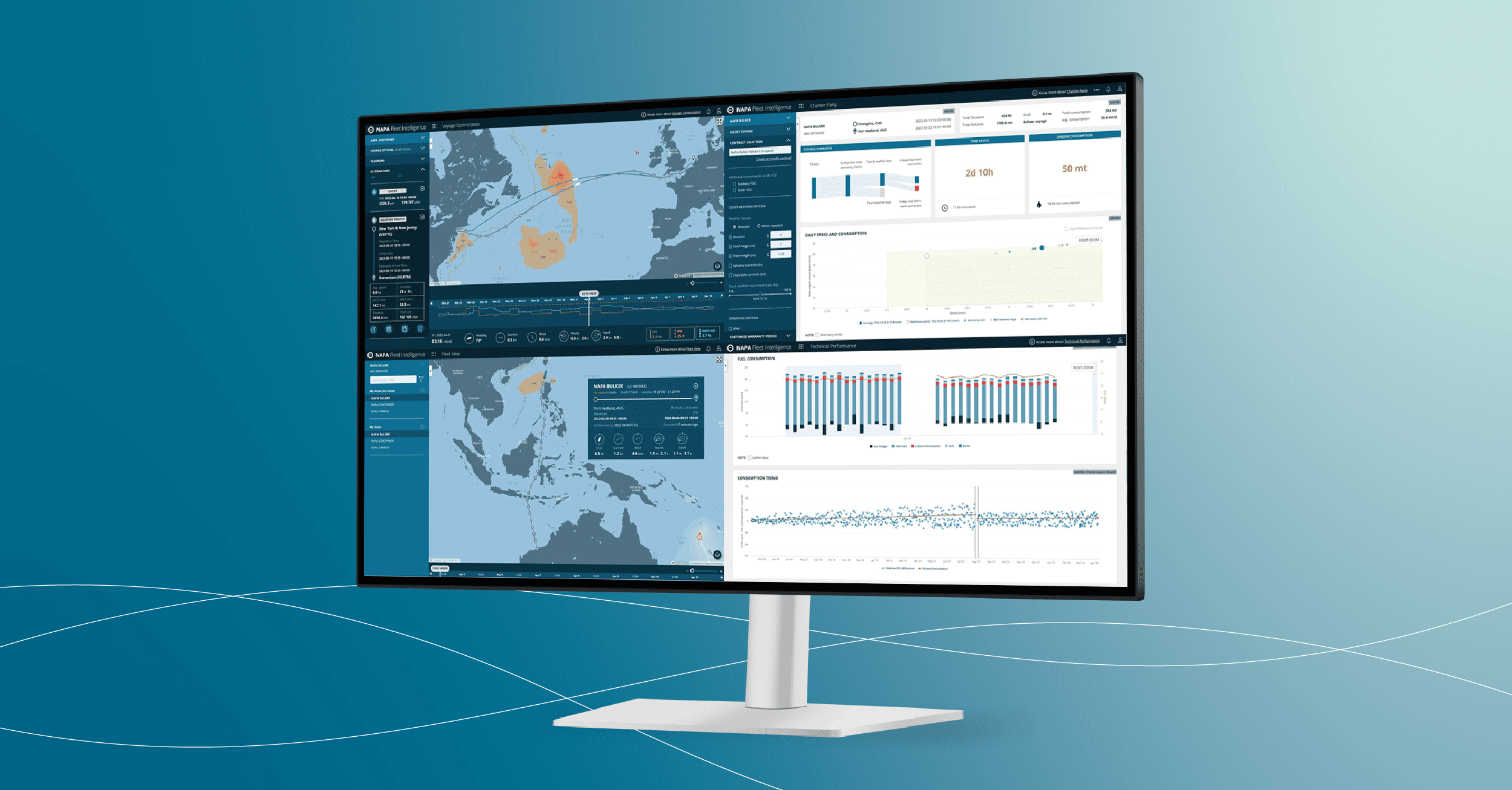November 19, 2024
MEPC 82: Progress Improves the Case for Voyage Optimization

The International Maritime Organization’s 82nd Marine Environment Protection Committee meeting (IMO MEPC 82) took place in October 2024 – and the headline discussions were on a global carbon levy and a goal-based international marine fuel standard, while tangible decisions were also made on new Emissions Control Areas (ECAs) and improvements to CII were somewhat evaluated.
Economic measures take center stage
While not finalized, the global carbon levy would put a clear price on a ship’s CO2 emissions. Emissions pricing mechanisms like this enhance the business case for ship operators to minimize their fuel use and related GHG emissions.
- In this regulatory landscape, voyage optimization platforms – which use real-time data on weather and sea conditions to evaluate and adapt a vessel’s course – do not only slash fuel expenses and emissions but also reduce the costs of regulatory compliance.
From a more technical standpoint, a goal-based international marine fuel standard is on the IMO’s legislative agenda. This regulation, combined with the carbon levy, would help drive a phased reduction in the GHG intensity of marine fuels. A clear and substantive renewable marine fuel standard, for example, could underpin the uptake of renewable fuels such as e-methanol, e-methane and e-ammonia at a larger scale.
Again, this would enhance the rationale for doubling down on efficiency because these fuels will be much more expensive than conventional fuels. The prices of alternative fuels remain uncertain, but the consensus among industry commentators is that they will be anywhere between two and ten times more expensive than current fuels due to production costs and an initial supply shortage compared to demand. If fuel costs are even higher, then the competitive cost advantage offered by voyage optimization becomes increasingly compelling for ship operators.
The cheapest and cleanest fuel is the fuel you don’t need to use in the first place!
While it would have been more positive to see concrete decisions on the carbon levy and fuel standard at MEPC 82, the talks have provided some certainty on the industry’s environmental regulations and the ‘direction of travel’. Tangible decisions were, however, made on important issues like Emission Control Areas (ECAs).
New Emissions Control Areas announced
ECAs are special sea areas where the emissions of Nitrogen Oxides (NOx), Sulfur Oxides (SOx) and particulate matter, which have adverse impacts on human health and the environment, are regulated. Following MEPC 82, the Norwegian Sea and the Canadian Arctic waters have been designated as ECAs. Conditional NOx limits will be effective from 01 March 2026 and SOx from 01 March 2027.
- These new ECAs will add to existing ones in the Baltic Sea, North Sea, North America West & East, Hawaii, and Carribean, as well as the Mediterranean ECA which will be implemented on May 01, 2025. The current ECAs are all included in the NAPA Voyage Optimization module of its Fleet Intelligence platform. The new ECAs will be live on the platform as soon as they are implemented. This means that when planning a voyage the relevant ECAs can be considered, routes including and excluding the ECAs can be compared, and the route with the lowest total cost can be chosen.
Ready to see the impact firsthand?
Request your NAPA Voyage Optimization demo today
Plans still in place to update CII
There was only very minor progress on the IMO’s Carbon Intensity Indicator (CII) at MEPC 82, as delegates “commenced the review” of CII, as well as the Ship Energy Efficiency Management Plan (SEEMP) and Energy Efficiency Existing Ship Index (EEXI). Considering these are seen as short-term GHG measures by the IMO, delegates will have to iterate on and improve the measures soon.
- MEPC 82 agreed to consider the gaps and challenges related to CII and SEEMP in a two-stage approach. At this year’s meeting, no gaps were identified regarding EEXI. The remaining gaps and challenges may be addressed in the first phase before 1 January 2026. The elements left to review include CII reduction (Z) factors for 2027 to 2030, port call efficiency, and accessibility of DCS data to name a few priorities.
Explore NAPA CII Simulator which uses a vessel’s digital twin and historical data to predict future CII ratings and assess the impact of various energy efficiency measures.
Keeping up with regulations through digital technology
As the regulatory landscape continues to shift, it is imperative to have access to digital technology that adapts and updates to your needs, and factors in the impact of all the different legislation. For a comprehensive picture of environmental performance and regulatory costs, it is also essential to model how GHG emissions regulations will impact the ship’s operations. This is where information from NAPA’s FuelEU Maritime and EU ETS modules or CII Simulator can be pulled into NAPA’s Fleet Intelligence platform.
- Similarly to regulations, technologies such as voyage optimization should not be viewed in isolation either. This technology lays the foundation for efficiency (clean) technology uptake. For example, NAPA Voyage Optimization has been pivotal in enabling ships to harness wind assisted propulsion technologies, such as rotor sails, because it ensures that ships can take full advantage of favorable wind conditions, while also helping to maintain safety and stability. These exciting combinations of technologies can significantly support regulatory compliance and progress toward emissions reduction targets
In summary, the global fuel standard and CO2 levy discussed at MEPC 82 are promising. However, considerable progress remains necessary for delegates to agree on any final legislation. Encouragingly, participants have agreed to an additional meeting in February 2025, so that measures can be approved at MEPC 83 in April. The new ECAs and iterations to CII are welcome developments, and it will be important to see how these continue to unfold in the next few years.
We will continue to monitor all of the regulatory discussions closely, but, regardless of the final details, the IMO’s proposed economic measures, and its more technical legislation, have the potential to move the dial on shipping’s pursuit of net-zero GHG emissions. With this clear ‘direction of travel’ – the case for adopting operational efficiency enhancements to improve sustainability and competitiveness is greater than ever before.
Want to know more?
Get in touch with our experts to know how to boost operational efficiency to improve competitiveness
